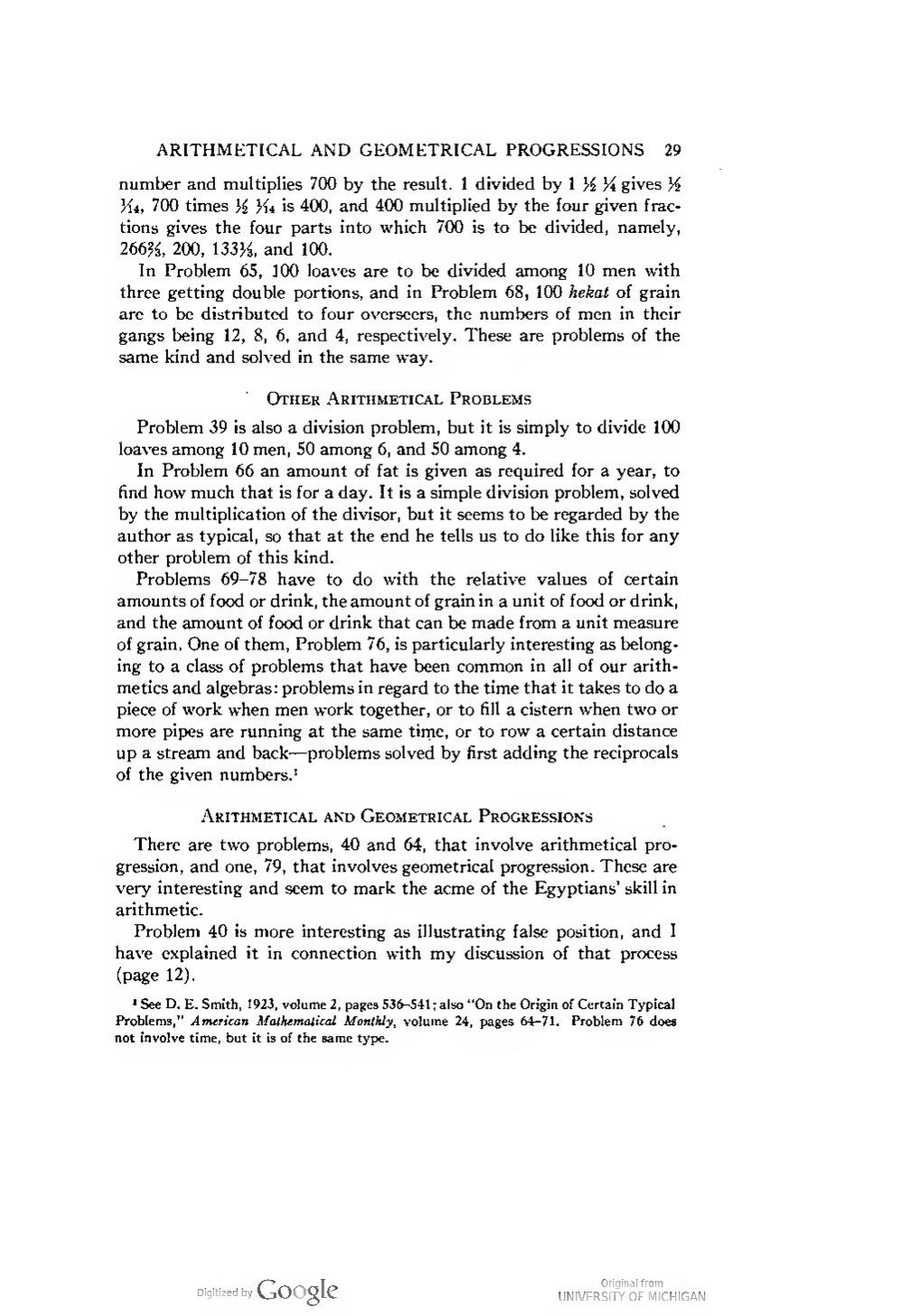number and multiplies 700 by the result. 1 divided by 1 1⁄2 1⁄4 gives 1⁄2 1⁄14, 700 times 1⁄2 1⁄14 is 400, and 400 multiplied by the four given fractions gives the four parts into which 700 is to be divided, namely, 2662⁄3, 200, 1331⁄3, and 100.
In Problem 65, 100 loaves are to be divided among 10 men with three getting double portions, and in Problem 68, 100 hekat of grain are to be distributed to four overseers, the numbers of men in their gangs being 12, 8, 6, and 4, respectively. These are problems of the same kind and solved in the same way.
Other Arithmetical Problems
Problem 39 is also a division problem, but it is simply to divide 100 loaves among 10 men, 50 among 6, and 50 among 4.
In Problem 66 an amount of fat is given as required for a year, to find how much that is for a day. It is a simple division problem, solved by the multiplication of the divisor, but it seems to be regarded by the author as typical, so that at the end he tells us to do like this for any other problem of this kind.
Problems 69-78 have to do with the relative values of certain amounts of food or drink, the amount of grain in a unit of food or drink, and the amount of food or drink that can be made from a unit measure of grain. One of them, Problem 76, is particularly interesting as belonging to a class of problems that have been common in all of our arithmetics and algebras: problems in regard to the time that it takes to do a piece of work when men work together, or to fill a cistern when two or more pipes are running at the same time, or to row a certain distance up a stream and back—problems solved by first adding the reciprocals of the given numbers.[1]
Arithmetical and Geometrical Progressions
There are two problems, 40 and 64, that involve arithmetical progression, and one, 79, that involves geometrical progression. These are very interesting and seem to mark the acme of the Egyptians’ skill in arithmetic.
Problem 40 is more interesting as illustrating false position, and I have explained it in connection with my discussion of that process (page 12).
- ↑ See D. E. Smith, 1923, volume 2, pages 536-541 ; also "On the Origin of Certain Typical Problems," American Mathematical Monthly, volume 24, pages 64-7l. Problem 76 does not involve time, but it is of the same type.
